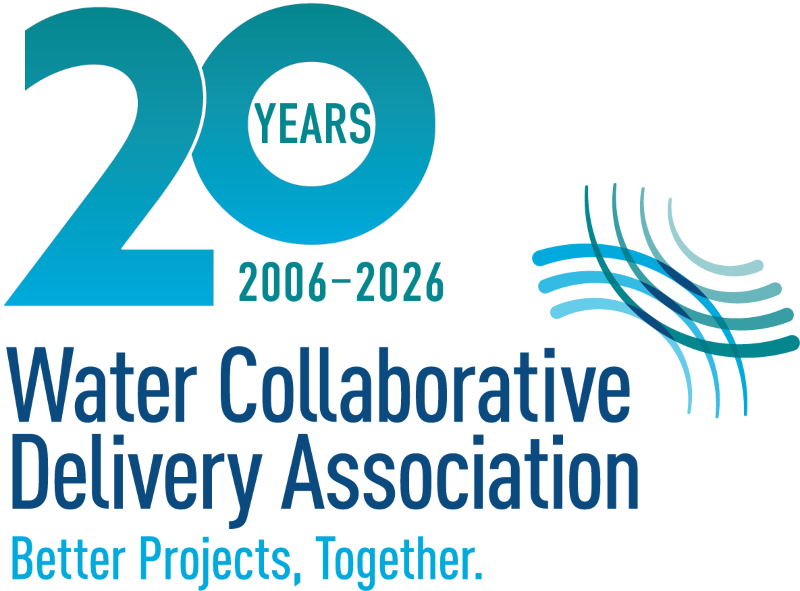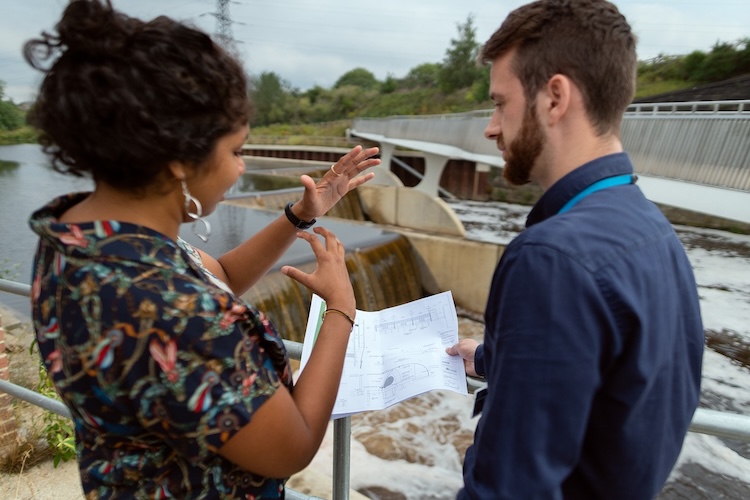As water and wastewater projects grow in complexity, so does the need for streamlined delivery methods. Agencies are steadily moving away from siloed design-bid-build (DBB) models and toward collaborative solutions that engage stakeholders early and often. This shift grants owners the opportunity to maintain a clear line of sight on every phase of the project, making sure that the outcome meets their evolving standards and expectations.
One method gaining steady momentum is the construction management at risk (CMAR) collaborative delivery method. By prioritizing early collaboration beginning at the preconstruction phase, CMAR helps project teams address challenges head-on, mitigate risk, and bring clarity to complex builds. This results in more confident clients, better budget control, and faster delivery.
What is CMAR?
Over time, construction delivery methods have evolved to meet the demand for cost-effective, time-sensitive solutions. While the DBB model segments the design, construction, and engineering phases across separate contracts, CMAR consolidates these efforts into a single, integrated process.
Construction management at-risk introduces the construction manager early, typically by the 30% design milestone. This early involvement allows the CMAR team to weigh in on project decisions from the outset, creating stronger alignment between the owner, designers, and contractors.
Unlike traditional models, CMAR fosters real-time coordination across disciplines. The CMAR firm assumes primary risk for both cost and performance, driving early problem-solving and planning that leads to reduced project disruption.
Where Does Preconstruction Fit In?
The backbone of CMAR is a robust, well-executed preconstruction phase. It’s here that foundational project decisions are made—decisions that, when informed by construction insights, can unlock major savings and avoid future delays.
For rapidly growing municipalities or communities grappling with water scarcity, preconstruction planning enables the aggressive scheduling needed to meet urgent demands. For clients navigating regulatory deadlines or funding constraints, CMAR offers agility without sacrificing quality.
With CMAR quickly becoming the go-to method for agencies under pressure to deliver high-impact infrastructure quickly and efficiently, there are immediate benefits, including the following:
Early Risk Management: By involving the contractor early, owners shift risk upstream and avoid costly surprises during construction. This early involvement allows the CMAR team to identify constructability issues, procurement constraints, and logistical conflicts before they escalate. For example, discipline-specific design meetings convene the owner, owner’s representative, plant operations staff, and other key stakeholders to provide a platform for real-time feedback and continuous adjustment. The ability to flag potential problems early saves time, money, and stress later in the schedule.
Speed to Market: Owners can move forward with portions of the work even as design continues. Rather than wait for full design completion, teams can structure early bid packages for critical scopes like long-lead equipment, site work, and electrical. This sequencing advances construction activity while design is progressing, often leading to months being shaved off the overall schedule to deliver critical service deadlines.
Budget Confidence: Cost modeling throughout design gives clients a clearer picture of financial commitments. This transparency allows the team to evaluate design decisions with full cost implications in mind, avoiding last-minute scope reductions or funding shortfalls. During preconstruction, real-time guidance on procurement strategy and material availability helps maintain financial alignment even in the face of market volatility. The outcome is a realistic, achievable budget that’s sustained from concept to closeout.
Team Integration: The greatest strength of CMAR lies in the collaborative culture it fosters. Preconstruction is the phase where team dynamics take root. Designers, builders, and owners work side by side instead of sequentially. These integrated working sessions transform the contractor’s role from reactive builder to proactive partner. They help ensure that every team member has a stake in the outcome and a voice in how it’s delivered.
The Payoff
The CMAR model does more than just change the contract structure and add a contractor earlier in the process; it redefines the culture of a project team, allowing for transparency and shared accountability.
For owners new to collaborative delivery, CMAR offers a reassuring path forward. Open-book costing, clear communication, and shared problem-solving build a sense of ownership and trust that carries through to project closeout.
The preconstruction phase is key to establishing trust. It maintains that all stakeholders, designers, engineers, owners, and operators have a stake in the process from the start and that unity pays dividends in both technical execution and team cohesion.
When well executed, CMAR enables agencies to respond faster to community needs without losing control of their projects. It’s not just about adding a contractor earlier, it’s about transforming how decisions are made by sharing risks and achieving goals as a team from the beginning.

